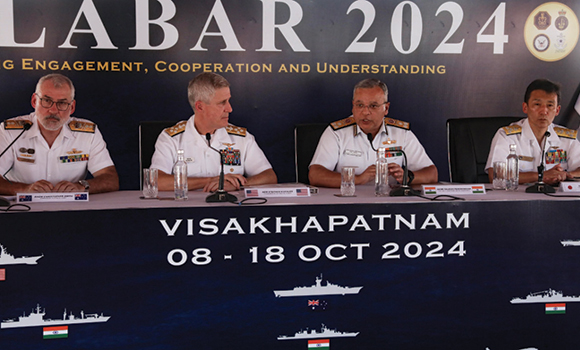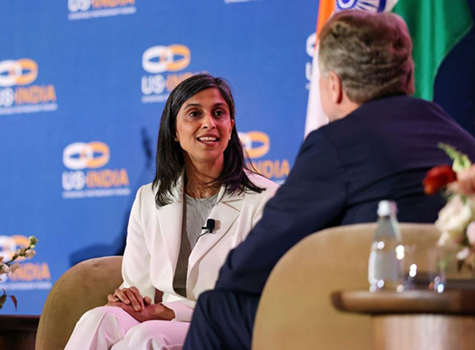
Australia, Japan, and U.S. forces joined the host Indian Navy for an opening ceremony to celebrate the launch of field-training exercise Malabar 2024 in Vishakhapatnam, India, on October 9, 2024.
The ceremony and associated shore-phase activities were followed by scheduled at-sea exercises in the Bay of Bengal, India.
“I’m fired up to be here today with my counterparts as our navies train together in the Indian Ocean to strengthen our combat readiness, maritime integration, and interoperability,” said Adm. Steve Koehler, commander, U.S. Pacific Fleet. “Malabar is a great example of a combined team operating together in order to deter conflict and reinforce our shared commitment to a free and open Indo-Pacific.”
This year marks the 28th iteration of the Malabar exercise, which began in 1992 as a bilateral exercise between the United States and India. The exercise has since evolved in scope and complexity and now includes Japan and Australia. This marks the fifth time that all four nations have participated in Malabar to advance the collective planning, integration and employment of advanced warfare tactics across participating nations.
“Malabar 2024 reaffirms Indian Navy’s commitment to maritime security and cooperation among like-minded nations in the Indo-Pacific,” said Vice Adm. Rajesh Pendharkar, Flag Officer Commanding-in-Chief, Eastern Naval Command (ENC). “Our joint efforts aim to enhance operational synergy and foster stronger bonds of friendship. Together, we look towards safeguarding our shared values and achieve peace and stability in the region.”
At-sea exercises included combined training in the surface, sub-surface, air and information domains. Eight ships and nearly a dozen aircraft took part in the exercise.
“It has been 17 years since the JMSDF participated in Malabar for the first time in 2007,” said JMSDF Vice Adm. Katsushi Omachi, commander in chief, Self Defense Fleet. “I believe Malabar will contribute to the peace and stability, as well as the rules-based maritime order, which lead to a free and open Indo-Pacific. Japan-U.S.-India-Australia collaboration is now getting closer than before and I am expecting the multilateral bonds among the navies will deepen.”
Representing the U.S. in the exercise are a P-8 Poseidon aircraft assigned to Commander, Task Force 72 and the Arleigh Burke-class guided missile destroyer USS Dewey (DDG 105), which operates under Commander, Task Force 70 and Destroyer Squadron (DESRON) 15, the Navy’s largest DESRON and the U.S. 7th Fleet’s principal surface force.
The host contingent from India includes the first-in-class guided-missile destroyer INS Delhi (D 61), as well as at least four other surface combatants and aircraft.
The lead of this year’s exercise is India. The Malabar planning and exercise lead rotates each year among participating nations, along with its location to demonstrate the combined ability to exercise across the entire Western Pacific and Indian Ocean.
U.S. 7th Fleet is the U.S. Navy’s largest forward-deployed numbered fleet, and routinely interacts and operates with allies and partners in preserving a free and open Indo-Pacific region.



